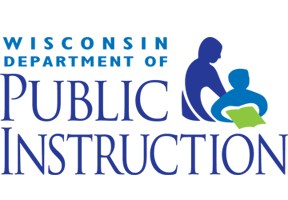After another year of attending the Wisconsin State Reading Association Convention, I leave with an abundance of new thinking to reflect upon. I’m still challenging myself as to what direction I plan to take with this information, for I have quite a collection of quotes, questions, reminders and comments to think about. Below I have listed those that made me the most reflective. The first quote is the one I’m thinking about the most. What DO I get to do? I’m leaving them here for you, my dear colleagues in education, and ask you to read them and use them to challenge your own thinking.
When we leave a conference like this, we should not only think about what we got, but also about what we get to do. -Kathy Short.
What are you doing to make the changes you want to see happen? To be an indelible leader? -Barb Novak
Indelible leaders: your job is to develop a collaborative culture to the point where you become dispensable. -Michael Fullan
We believe all students can learn, do we believe all teachers can learn? -Michael Fullan.
The principal’s new role: to lead the school’s teachers in a process of learning to improve their teaching, while learning alongside them about what works and what doesn’t. -Michael Fullan
Collective Efficacy has a 1.55 effect size. -Michael Fullan quoting John Hattie research.
The learning of the school needs to drive the agenda, not a personal agenda. -Michael Fullan
The heart of the school is dependent upon the number of elephants in the room. -Sara Ahmed quoting Lucy Calkins.
Teaching reading is not about increasing test scores; it’s about teaching our students to engage with the world. -Tony Evers, Wisconsin State Superintendent
When we teach kids, we should feel that they are endlessly fascinating. -Katherine Bomer
When a child doesn’t “fit” expect to be delighted. Expect that there will also be difficulties. -Katherine Bomer
The best way to teach grammar and punctuation is through wide reading. Pay attention to the author’s intention, so you’ll read it a certain way. - Penny Kittle.
Students need to notice language first, name what they see and stand on the shoulders of better writers. -Penny Kittle
Culturally Responsive Teaching is something you practice with yourself and with your students. -Teaira McMurty
It’s okay to have bias for right now, but you have to learn to get away from it. -Teaira McMurty
Bring out the best in each student. Not getting there in the time we have is a POTENTIAL gap. -Decoteau Irby
We have an obligation to make our kids feel visible when they feel invisible.-Sara Ahmed
Best first teaching is the best intervention. -Regie Routman
Fight for the thing that you care about, but do it in a way that will lead others to join you. -Regie Routman
We must be prepared to take calculated risks for our students. -Regie Routman
Worry about more depth and quality than about getting it all in. This is true for both professional learning as well as for student learning. -Regie Routman
Fidelity must always be to the child, not to a program. -Regie Routman








